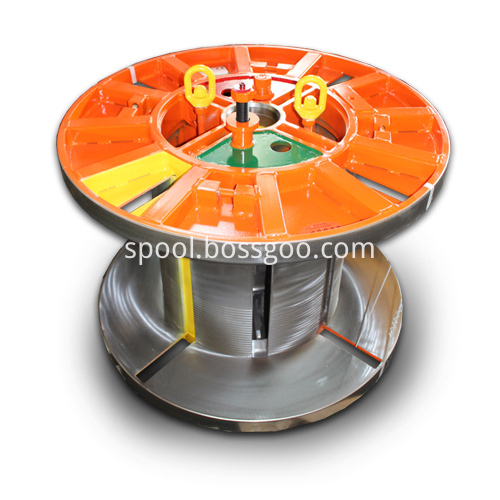In the future, in order to realize an LED bulb having a brightness equivalent to a 100W incandescent bulb, a countermeasure against heat dissipation different from this is required. The new LED package is one of the countermeasures.
Nippon Tungsten has developed an LED package that combines a silver-plated copper lead frame with a ceramic housing (Figure 15). The package will serve as a chip backplane supplier with no LED chips installed.
Figure 15: The LED packaged copper plated lead frame provided by Nippon Tungsten is fixed on a lower-priced ceramic case. Heat is mainly conducted to the heat sink through the lead frame.
In the past, there have been products using high thermal conductivity aluminum nitride materials as LED package housings. The heat of the LED can be conducted to the package backplane by means of the housing. Although the case is capable of realizing a high-power LED package by virtue of its thermal conductivity and heat resistance superior to that of a resin case, it is expensive.
In contrast, the Japanese tungsten chip package substrate uses a copper lead frame as a heat conduction path instead of an LED package. The outer casing is made of an inexpensive ceramic that has poor thermal conductivity but excellent heat resistance. This reduces the cost to half that of the original ceramic LED package.
Although the structure of this package is very simple, copper has a low melting point and is difficult to combine with ceramics. To this end, the company has developed a ceramic that can be fired at a temperature lower than the melting point of copper and has strong copper bonding. By improving the temperature control and fixing method during firing, a high-precision chip substrate with electrodes (between the tips of the lead frames) spaced less than 70 μm was successfully developed (Fig. 16). Sample supply is now available.
Figure 16: Results of LED packaged prototypes and thermal conductivity analysis of Nippon Tungsten The company developed a ceramic that can be fired at a temperature lower than the melting point of copper and has a high bonding ability with copper. The prototype can be installed with 10 LED chips, and the thermal conductivity is good. The temperature difference between the LED chip and the lead frame is about 2 °C. In thermal analysis, the closer to red, the higher the temperature.
The "Electrified AGSP Backplane" of the electrical and chemical industry is also one of the means to improve the heat dissipation of LED packages. The company used the technology developed by Daiwa Industry (Headquarters: Okaya, Nagano Prefecture) to create a base plate with arbitrary shapes of copper pillars running through any position. If the backplane is used as part of an LED package, the contact of the copper post with the LED chip can be used to conduct heat to the heat sink. Although there are still problems to be solved in terms of cost, the adoption of new packages is expected to expand in the future.

Very solid Take-apart Reel, particularly indicated for a continuous use in time. It is
fully turned on the winding surfaces (barrel and inner flange) and on the flange ring.
The available sizes are as per DIN 46395 specifications or as indicated by the
Customer, for a normal use up to 1800 mm of flange diameter. It is supplied CE
marked, with an instruction and maintenance manual. Indicated for metallic wire.
To be used for high speed processing on a wiredrawing machine or for coil transfer.
It is supplied with the following alternative closing / dismounting options:
- central screw with a dead hole and safety lock
- central ring with a central feed-through hole and safety lock
- 3-side screws with central feed-through hole
- 4-side screws with central feed-through hole
- pneumatic operation and safety lock
- oil-pressure operation and safety lock
Available on request:
- dynamic balancing for speeds up to 50 m/s
- slots for the coil strapping in 3, 4, 6 or 8 positions
- arrangement for use with a cardboard tube
- size compatible for Z2, Z3 and Z4 coils
- false flange and adapters on the drum to reduce the traverse width
- vice for wire locking with automatic unlocking when the reel is dismounted
- cone-shaped drum
- cone-shaped drum for lifting and transferring the coil
- plastic / polyethylene / carpet / ... lining
- painting

Collapsible Cable Reel, Take Up Reel, Collapsible Cable Coiler, Take-apart Reel, Screw Collapsible Reels
NINGBO BEILUN TIAOYUE MACHINE CO., LTD. , http://www.spool-manufacturer.com